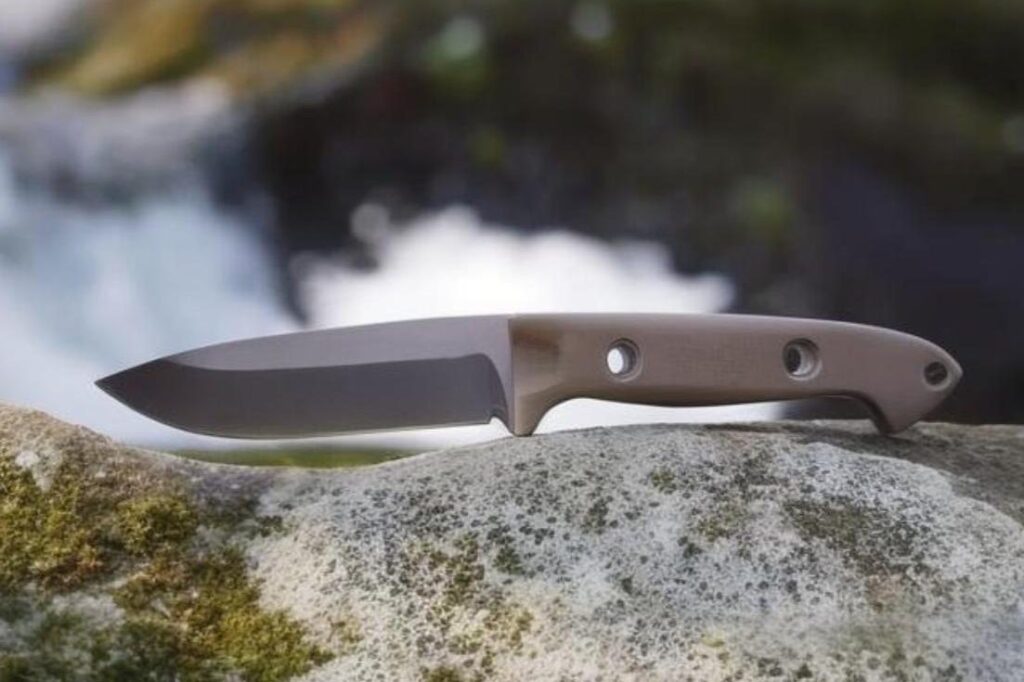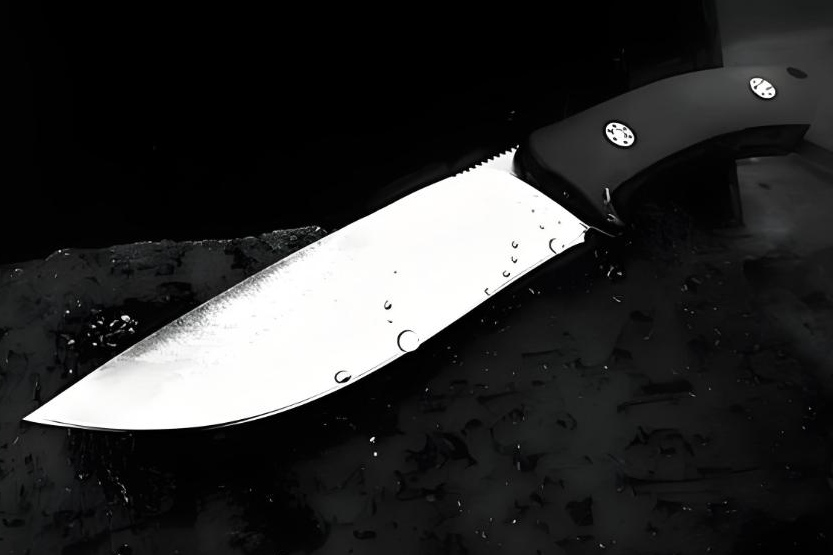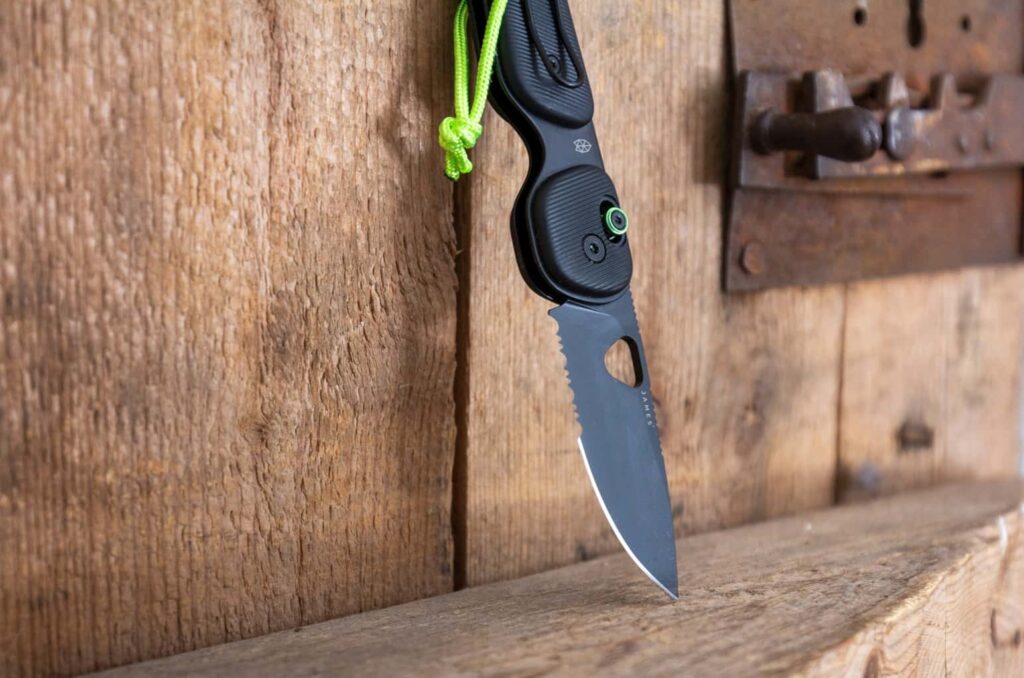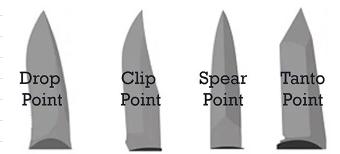Imagine you’re out in the wilderness or just going about your day-to-day tasks; having a reliable tool makes all the difference. That’s where the drop point blade comes into the spotlight.
Known for its versatility and robust blade design, a drop point blade has a sloping spine that converges with the blade’s edge, forming a strong point. This feature makes it an ideal choice for hunters and outdoor enthusiasts who need a knife that can handle a variety of tasks without compromising on precision and control.
One of the key aspects that sets the drop point blade apart from other knife designs is its functionality and adaptability to different types of cutting tasks.
In this article, we’ll explore the historical origins, design features, and the uniqueness of drop point blades compared to other knives. You’ll also discover the wide range of applications that make this knife a favorite among outdoors enthusiasts and everyday users alike.
History of drop point blade

The origins
The drop point blade, a design steeped in Scandinavian tradition, was initially shaped by the hands of Nordic ancestors from rudimentary materials like flint and obsidian. As metallurgy advanced, the use of copper, bronze, and iron refined the blade’s form and function.
Its name—’drop point’—derives from the spine’s downward slope towards the tip, a feature that enhances control and versatility. This blade was an indispensable companion in the unforgiving northern wilderness, where precision and reliability were survival requisites.
Improvements in modern designs
With the dawn of modern blade-making, the drop point blade has seen significant enhancements, transitioning from early metals to the superior strength and edge retention of steel and the lightweight precision of ceramic.
This blade’s robust design, featuring a broad tip less prone to accidental piercing, has made it a modern hunting favorite, ensuring clean cuts without damaging the game. The drop point’s enduring design is a testament to its adaptability, continuing to serve as a reliable tool for hunters, adventurers, and craftsmen in the contemporary world.
Start Working with a Professional Now
Drop point blade basics

What is a drop point blade?
A drop point blade has a distinctive shape where the spine gradually slopes down to meet the edge, resulting in a lowered point. This design is characteristic of classic hunting knives and generally measures 3.5 to 6 inches long.
Basic characteristics
- Tip: The defining feature of your drop point blade is its strong and centered tip that is less prone to breaking. It offers control, which is ideal for precision tasks.
- Belly: Equipped with a generous belly, the drop point blade excels in slicing. This curvature makes the blade more efficient for cutting and skinning.
- Blade Shape: Notice the broad and robust blade shape that gradually tapers to the tip, providing a perfect balance for cutting and piercing.
Comparing blade shapes
- Spine: In contrast to other blade shapes, the drop point blade has a spine that slopes down in a convex curve to meet the tip, reducing the chances of accidental piercing.
- Convex Curve: This gradual curve offers strength to the spine, making your blade durable for heavy-duty tasks.
- Other Blade Shapes: When compared to clip point blades, your drop point blade provides a larger cutting area but with less piercing ability. The trade-off yields a blade that is more utilitarian and less susceptible to breakage.
Practical applications

Everyday carry usage
Drop point blades are highly popular for everyday carry (EDC) knives due to their versatility and practicality. With a centralized tip location and robust design, you can easily accomplish fine cutting tasks such as cutting rope, opening boxes, or even intricate wood carving. The aesthetic appeal of the drop point knife also makes it a popular choice for EDC enthusiasts.
- Opening packages: Quickly slice through tape and packaging materials
- Cutting rope or cord: Easily sever ropes or cords with the ample blade belly
- Detailed carving: Maintain control and accuracy during fine carving tasks
Hunting and fishing
Drop point blades have found great utility in outdoor activities like hunting and fishing. Their ample belly helps you effectively slice, skin, and prepare game for consumption. Moreover, these knives are excellent choices for fishing tasks like cleaning and filleting fish, as well as gutting and field dressing game.
- Skinning game: Drop point knives allow for precise cuts needed in skinning
- Gutting and field dressing: Easily remove organs and prepare game in the field
- Fishing tasks: Fillet fish and remove scales with control and precision
Survival and tactical uses
Drop point knives also excel in survival and tactical situations. Their strong, sturdy tip enables you to pierce, cut and make controlled cuts in high-stress scenarios, such as cutting through seat belts in emergency situations or performing tasks in a tactical environment.
The effectiveness of drop point blades in these situations makes them a preferred choice for military personnel, first responders, and outdoors enthusiasts.
- Emergency situations: Cutting seat belts, breaking windows, or slicing through clothing for first aid
- Tactical applications: Ideal for soldiers, police, or search and rescue personnel
- Survival tasks: Wood processing, shelter building, and fire-starting
Start Working with a Professional Now
Drop point blade vs. other blade shapes

When exploring knife designs, it’s important to understand the advantages of different blade shapes. Each design offers unique characteristics that suit various tasks. Let’s compare the tanto blade with other popular shapes to determine which might best fit your needs.

Clip point blade vs drop point
A clip point blade is easily identifiable by the concave cut out of its spine, which creates a sharper and more precise point. This shape excels in piercing tasks. In contrast, a drop point blade has a slowly convex curve leading to the point, offering a more controlled and stronger tip suitable for slicing.
- Piercing: Clip Point excels
- Control: Drop Point excels
Tanto blade vs drop point
Your tanto blade is inspired by Japanese swords and is characterized by its angular shape and strong tip, making it ideal for piercing tough materials and pushing cuts. A drop point blade, being more versatile, has a large belly that’s perfect for general cutting tasks.
- Piercing Tough Materials: Tanto excels
- Versatility in Cutting Tasks: Drop Point excels
Drop point vs spear point
The spear point blade is symmetrical and center-pointed, which is excellent for thrusting. It’s not as common in everyday knives but favored for tactical use. A drop point blade is more utilitarian, providing a balance between cutting and piercing with its robust tip and large cutting edge.
- Thrusting: Spear Point excels
- Balance of Cutting and Piercing: Drop Point excels
Frequently asked questions
What is a drop point blade good for?
A drop point blade is highly versatile, making it an excellent choice for everyday tasks. The blade’s design offers a strong point and a large cutting area, ideal for general cutting and slicing duties.
Is a drop point blade good for self-defense?
While not specifically designed for self-defense, the broad point of a drop point blade is less prone to breakage and can be effectively used in self-defense situations if needed. However, it’s always important to handle knives responsibly and within legal limitations.
What are the advantages of a drop point blade over other types?
Drop point blades provide a balanced blade design with a thicker, stronger tip that’s less likely to break. They offer better control in cutting, making them a preferred choice for precise tasks. This design also allows for easy sharpening, maintaining the blade’s effectiveness over time.
What makes the drop point blade suitable for hunting applications?
The design of a drop point blade provides a controlled cutting edge with a larger belly for efficient skinning or carving. Its strength and reliability also make it suitable for field dressing, making it a popular choice among hunters.
Having Drop Point Blade Knives in Your Arsenal
Ready to level up your knife collection with a drop point blade knife? Don’t wait any longer! Get in touch with Kegani and schedule a consultation. Discover how they can help you find the perfect drop point blade knife for your next adventure or everyday carry.
We have extensive expertise in creating a variety of high-quality knives, including drop point blade designs. Our commitment to meeting your specifications ensures you’ll get a knife that fits your needs perfectly.

